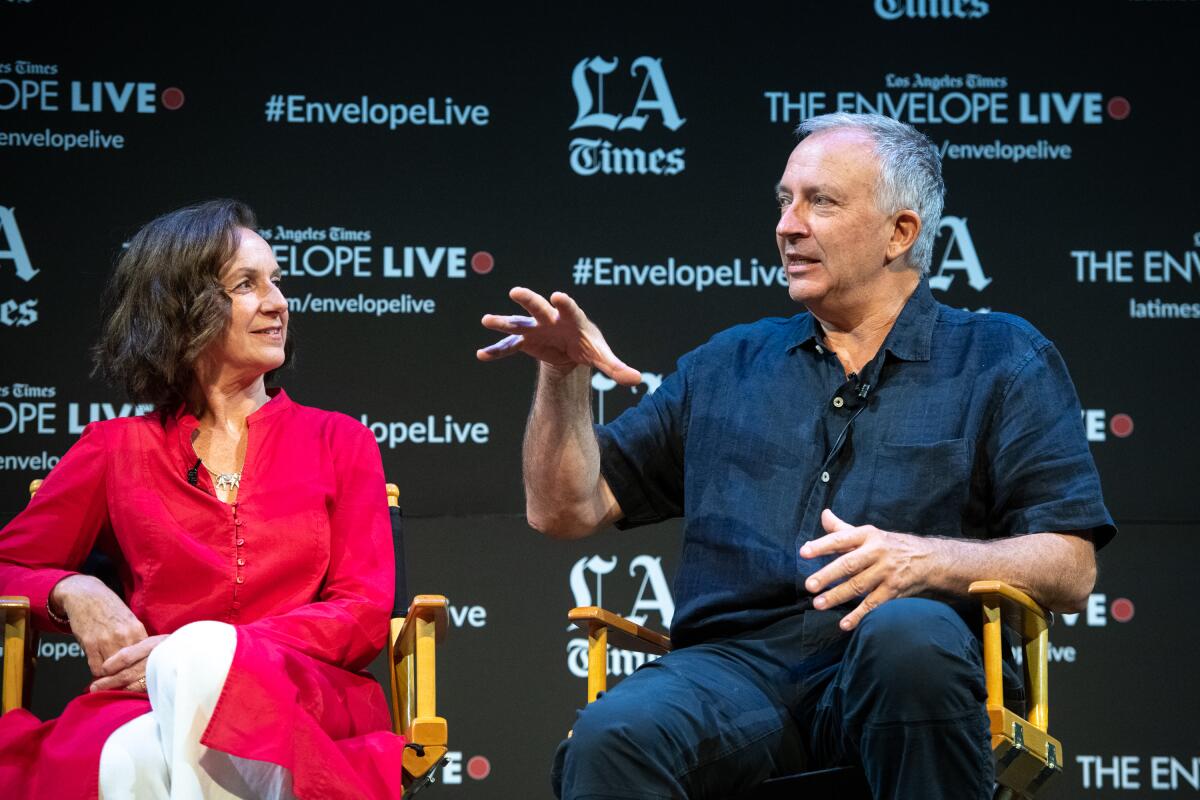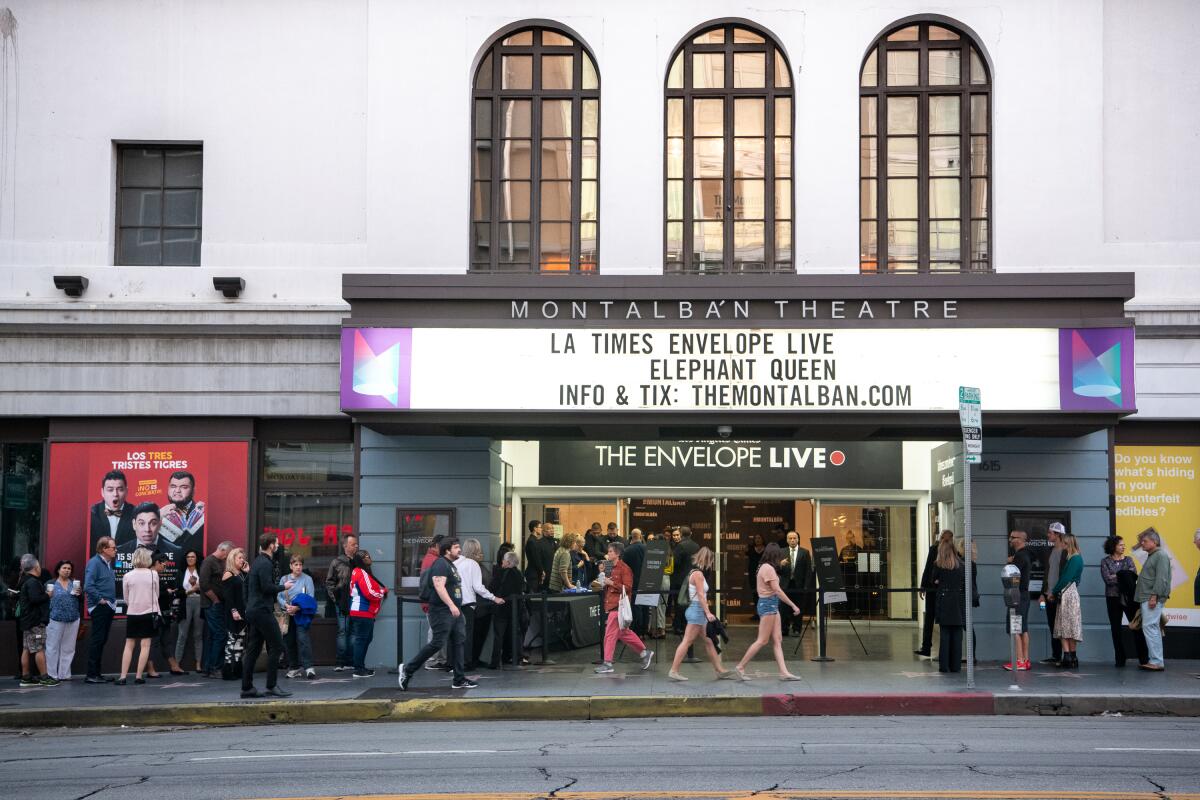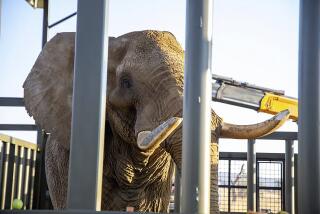The makers of ‘The Elephant Queen’ got down in the mud and up in the air

- Share via
Four years of blazing heat, cooling mud and unannounced visits by wildlife — all just part of the world that veteran documentarians lived in to make people “fall in love with elephants.”
The 2019 Envelope Live screening series kicked off Oct. 1 at the Montalbán Theatre in Hollywood with a Q&A and reception for “The Elephant Queen.” Directors Victoria Stone and Mark Deeble and composer Alex Heffes were on hand to discuss why they made the documentary, and some of the extremes they went to in order to capture its unique footage.

Co-director and veteran cinematographer Deeble found unusual places to hide his nimble RED camera rig to spy on the tenuous ecosystem at a rainy-season watering hole in Kenya’s Tsavo National Park. To get aerial shots, instead of using a drone, he manipulated the camera on a mount in a plane he flew himself, dive-bombing when necessary. The movie finds animals in months-long hibernation under the surface and discovers fish passing their eggs from water hole to water hole on the skin of elephants; it also captures the bizarre reproductive cycle of “foam frogs.”
To get what he called “toenail-level” images of the elephants and other creatures, Deeble fashioned a kind of metal box with a slot, like a man-sized mailbox, and sank it into the mud with him inside.

Director Mark Deeble reveals how he got some of the impressive shots in the film and the conditions he lived through to get them.
The veteran filmmaking team of Stone and Deeble had long wanted to make a documentary about elephants, especially given the crisis the species now faces: “Back at the turn of the last century, there were probably 10 million elephants in Africa. And now, we’re well down below half a million,” said Deeble. “We’re losing, I think the figures are something like 30,000 elephants a year; so one every 15 or 20 minutes.”
The filmmakers said that rather than making an obviously issue-driven movie, their strategy was to engage viewers emotionally, to make them “fall in love with elephants.” Stone said, “We want to make a film to reach the broadest possible audience, but also we really want to make a difference on the ground in Kenya.”
Toward that end, the documentary is tied into an outreach program of their design.

Directors Victoria Stone and Mark Deeble discuss their motivations for making “The Elephant Queen,” including educating the people of Kenya to perceive elephants in a new light.
Stone said the whole process took about 10 years from conception to completion, including those four years spent in the field with the animals.
“It took a year and a half to find Athena,” she said of the titular heroine, the matriarch of a group of elephants trying to survive a brutal drought. “We always feel she actually found us. She appeared behind camp one day, in the shade of a tree with her family.
“When you go into the field to make a film like that, you don’t really know ... you have to let it come to you a little bit.”
Composer Heffes (“The Last King of Scotland”) said he lived in the filmmakers’ camp for a few days “with elephants wandering in and out” to collect sounds and inspiration. He said among the influences of his stay there on the score was “the balance between the music and the sound effects and knowing when to pull back, where to let the natural sounds play and where to go for heightened emotion.”

Composer Alex Heffes discusses how he found the balance between his score and the natural sounds of the African savannah.
The filmmakers also talked about some of the dangers they faced, including run-ins with poachers, at the Q&A.
“The Elephant Queen” opens in select theaters on Oct. 18 before it debuts on Apple TV+ on Nov. 1.
More to Read
Only good movies
Get the Indie Focus newsletter, Mark Olsen's weekly guide to the world of cinema.
You may occasionally receive promotional content from the Los Angeles Times.










